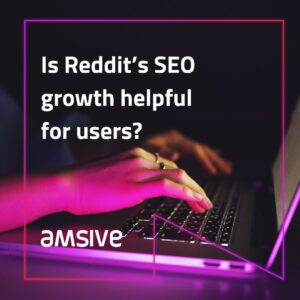Solving some of a marketer’s biggest challenges by understanding a persona’s next moves.
Omnichannel attribution[amsive_tooltip term=”attribution”] is one of the most difficult problems to crack for marketers. Measuring the value of campaigns and channels that reach potential customers is rarely straightforward, and easier said than done. But the solutions to these marketing obstacles could come from an unlikely origin — a Russian mathematician.
Named for late-19th and early-20th Century mathematician Andrey Markov, so-called “Markov Chains” are mathematical frameworks of possible events that sequence the probability of each event depending on the step that came before it. In marketing vernacular, Markov Chains use machine learning to model paths to conversion[amsive_tooltip term=”conversion-path”] across hundreds of thousands of potential customer journeys. By utilizing the full power of Markov Chains to understand each touchpoint[amsive_tooltip term=”touchpoint”] before an audience converted, brands can ultimately make more informed decisions on future marketing initiatives.
To get a better sense of how Markov Chains connects to marketing efforts and customer conversion, we spoke to Amsive’s VP of Data Analytics, Ray Owens.
Amsive: Take us through our Markov methodology.
Ray Owens: The Markov Chain is an algorithm that tracks the order of marketing channels customers encounter, and whether the journey ended in a conversion. We also frequently use the process to track creative rotation and online behaviors that result in conversions as well.
For example, take our health care vertical — if a prospect is searching around for information about the flu, or maybe looking for school physicals for their kids, we serve them ads for our urgent care clients based on collections of those triggers. The machine learning Markov Chain tracks which action, or actions, they exhibited that hopefully drove an eventual conversion for that urgent care client.
We previously spoke about how there are so many different approaches to attribution floating around. Where does the importance of Markov Chains factor in this equation?
It’s less about attribution of channels as it is about capitalizing on what decision drove the client to make a purchase and what influences our advertising[amsive_tooltip term=”advertising”] had.
When we push prospect data into our data management platform, we are pushing a highly predictive audience. We identify a good amount of different triggers that we can equate to desired behaviors that positively help drive conversions. For urgent care, for example, we can set a general audience with any in-market intent[amsive_tooltip term=”intent-signals”], but we can also single out people who are new movers to a certain area, or if these people research health-related topics, if they’re searching on destinations like WebMD, and so on, as triggers.
We can also see that a group might exhibit certain behaviors, and they didn’t become a customer. Or they exhibited a particular behavior or range of them, and they did become a customer. It’s about pinpointing what combination of signal(s) in the Markov Chain throughout the journey generated the actual conversion or lack of conversion, and turning that around into actionable takeaways.
By utilizing the full power of Markov Chains to understand each touchpoint before an audience converted, brands can ultimately make more informed decisions on future marketing initiatives.
So should clients be interested in this methodology because it fills in some of the gray areas surrounding true ROI?
Absolutely. It answers the question: What is working in my advertising? It digs down to take the guessing game out of whether to run a general ad all day long and ignore other factors, or whether to target a certain audience based on their progression along with certain behaviors with one, two, or even more triggers.
At the end of the day, our clients have invested in their marketing spend, and they rely on us to justify that spend. What we’re able to do is show them, through our research and experience, that we picked the right creative, we picked the right behaviors, and it’s paying off. Ultimately what it does is help us directly prove the effectiveness of the spend.
How do Markov Chains compare to attribution approaches like last-touch, first-touch, and linear-touch?
The consequence of taking typical heuristic methods like first-touch or last-touch, and giving one or more of them equal weight, is that we could potentially end up with skewed metrics.
For example, let’s say we’ve calculated all of our first-touchpoints, and the top two ROI[amsive_tooltip term=”return-on-investment”] drivers were a general ad and a back-to-school message trigger. What would have overwhelmingly been the major contributor to the conversion with these two at first-touch actually fall to the middle of the pack with a Markov Chain algorithm that ran through all the probabilities across the path to conversion.
We wouldn’t want a client to put all their spend on only first-touch points when the Markov chain method adjusts for the true effect of the journey that got them to conversion. We want to make sure to pinpoint the right behaviors that will pay off.
The consequence of taking typical heuristic methods like first-touch or last-touch, and giving one or more of them equal weight, is that we could potentially end up with skewed metrics.
But there’s also value in showing what could be removed as well. How does a lack of triggers or behaviors drive the effectiveness of conversions?
The removal effect is actually the heart and soul of proving how valuable each step is in Markov chains. If we have all possible paths with a Markov Chain, we can also calculate what completely removing a step could have on conversion results.
Say we had an audience that exhibited five different behaviors through the chain to conversion. If I were to take out everyone who converted, I could see who would have converted had they taken a certain different path. It’s like Jenga — you remove some of the pieces and see whether it stops the tower from standing up. In this case, you pressure test whether you would still get to conversion by strategically removing certain paths while justifying the effectiveness of the different triggers.
Are there any drawbacks to utilizing Markov Chain methods?
If you think about the sheer volume of the potential paths to conversion, we can’t calculate that much data without machine learning. It takes more effort to do machine learning methods like this, and you might have to invest in more resources. But it ultimately pays itself back by more efficient reporting and attribution.
We found it to be so versatile. We now do this for all of our urgent care clients, and we’re rolling this into real estate, financial services, and more because of the ability to capture multiple signals and their effect on conversion. The payoff is the amount of confidence our clients receive from having more visibility into what’s actually working with their marketing spend.





